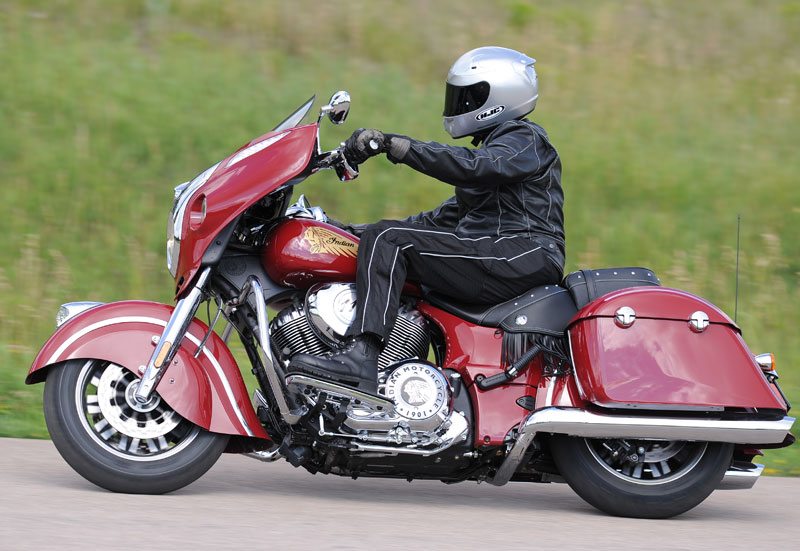
Everyone loves a good comeback story. Inspirational people, from Abraham Lincoln to Walt Disney to Rocky Balboa, were knocked down but not out, rising up to become stronger and more resilient than ever. Post-AMF Harley-Davidson and Hinckley-based Triumph made legendary comebacks, and now—finally—Indian Motorcycle is poised to do the same.
Established in 1901, Indian rose quickly to become the world’s largest motorcycle manufacturer, only to decline during the war years and ultimately collapse in bankruptcy in 1953. Half-baked revivals over the years tried to capitalize on the iconic value of the Indian brand, but none succeeded. Gilroy-based Indian went bust in 2003, and the Kings Mountain effort, from 2006 to 2011, was admirable but it struggled to sell $35,000-plus Indian Chiefs during the Great Recession.
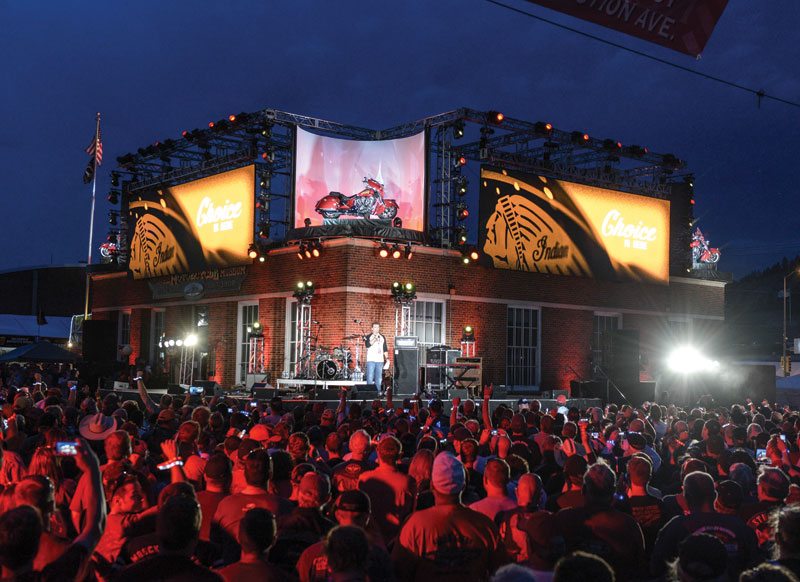
Enter Polaris Industries, a Minnesota-based multi-billion-dollar manufacturing juggernaut that sells everything from snowmobiles and ATVs to electric vehicles and Victory Motorcycles. Polaris had its eye on Indian as far back as the Gilroy days, finally acquiring the company in May 2011. In a little over two years—about half the time normally required to develop a clean-sheet motorcycle—Polaris re-engineered the Chief from the ground up, unveiling the Thunder Stroke 111 V-twin at Daytona Bike Week last March and launching not one but three all-new models at the Sturgis Rally in August. The day after the worldwide reveal, hundreds of rallygoers and motojournalists got their first ride on the new Indians. And believe me, they got everyone’s attention, drawing stares, nods, smiles and questions everywhere we went.
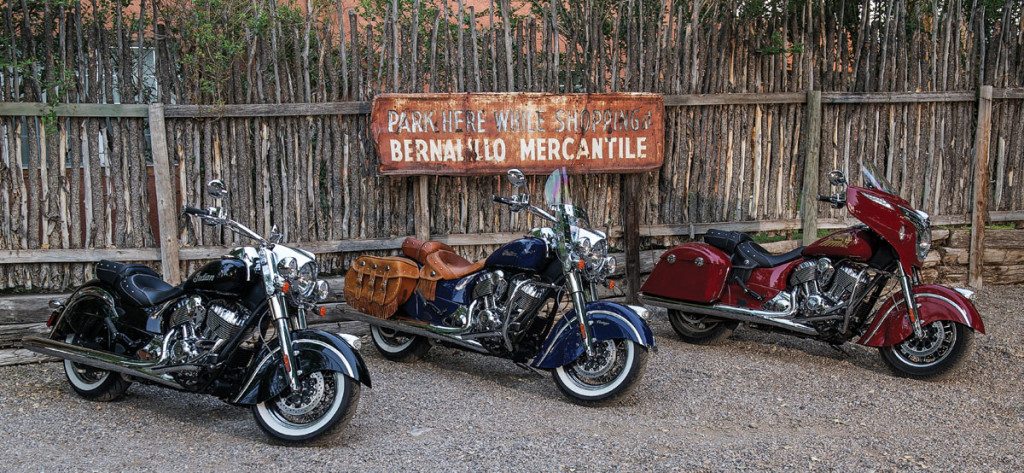
For 2014, Indian Motorcycle’s lineup includes the Chief Classic cruiser, the Chief Vintage soft bagger and the Chieftain, the first-ever Indian offered with a fairing and hard saddlebags. To enhance the touring experience, the Chieftain also has automatic saddlebag locks, a dual-speaker audio system with integrated Bluetooth and a tire-pressure monitoring system. All three have the same powertrain, with the air-cooled 111 ci/1,811cc Thunder Stroke 111 V-twin mated to a 6-speed overdrive transmission, but there are some chassis differences between the Classic/Vintage and the Chieftain. Standard features across the board include classic elements such as valenced fenders, illuminated Indian fender ornaments, genuine leather seats and acres of chrome, as well as contemporary ones, such as cruise control, ABS and keyless ignition.
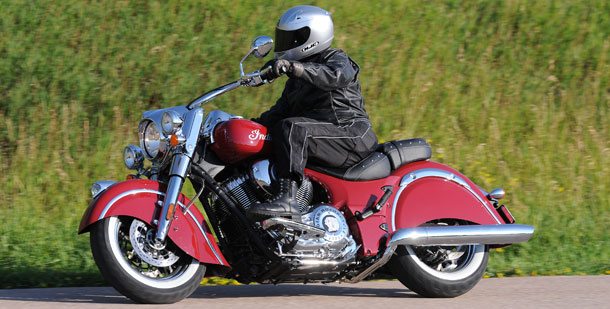
Over the course of three days, I logged more than 500 miles on the three models in and around the Black Hills of South Dakota. The Chief Classic is a stretched-out, knees-in-the-breeze cruiser with relaxed steering geometry (29 degrees of rake, 6.1 inches of trail), a rangy 68.1-inch wheelbase and spoked wheels with whitewall tires. It’s a long, arms-spread reach to the wide, tiller-style handlebar, allowing an unobstructed view of the speedometer, fuel gauge, LCD display and keyless ignition button that are housed in the chrome tanktop console. More chrome is everywhere you look—on the handlebar, switchpods, mirrors, levers, headlight nacelle and fork. Sitting just 26 inches off the ground, the wide, flat seat is comfortable and covered in black leather with chrome conchos. Feet rest on rubber-covered floorboards through which, along with the hand grips, you can feel a moderate amount of engine vibration.
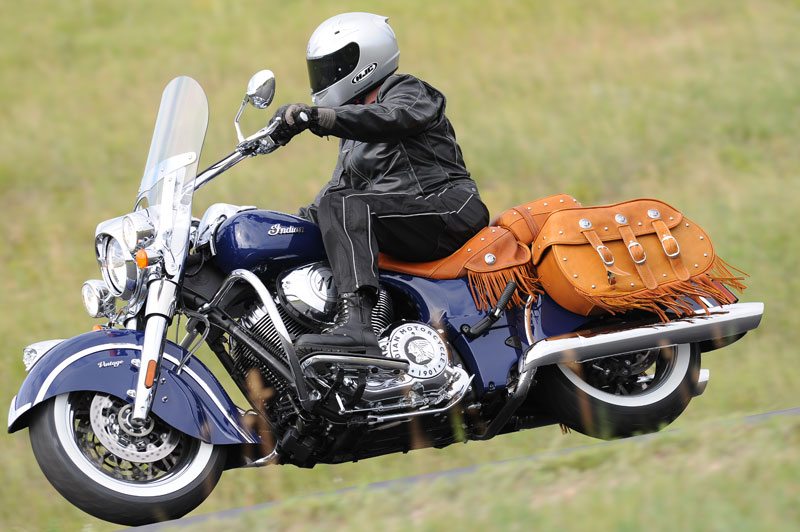
The Chief Vintage adds a quick-detach windshield and quick-detach leather saddlebags, plus aesthetic differences such as tan instead of black leather, decorative fringe on the seat and chrome instead of painted badges. The patrol-style windshield is wide and tall, requiring me to look through it rather than over it and providing a broad barrier against oncoming wind. Decorated with fringe and chrome conchos that match the seat, the top-loading saddlebags have straps with quick-release buckles.
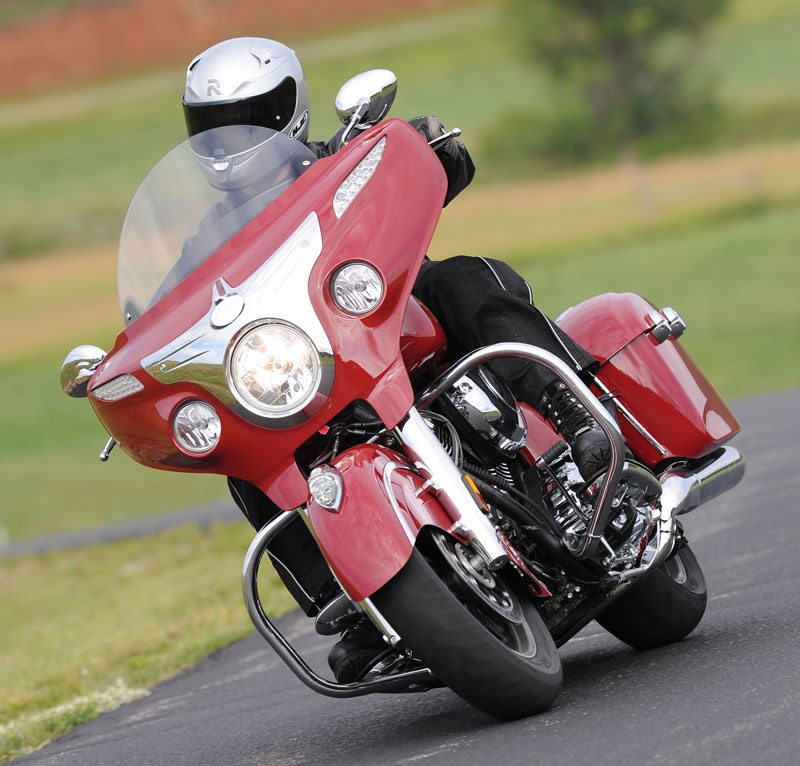
With a fairing inspired by streamliner trains, the Chieftain makes the boldest statement of the three. Fork-mounted and featuring a unique chrome prow, the fairing integrates a round headlight, driving lamps, turn signals and an electric windscreen, with an aerodynamic shape that was sculpted in a wind tunnel. The Chieftain slices through the air cleanly and quietly, and the windscreen offers 4 inches of vertical adjustment, though it moves up and down slowly. Weighing a claimed 848 pounds wet, the Chieftain is a heavy bike to lift off its sidestand. But as soon as you drop it into first gear and ease out the clutch, many of those pounds magically disappear. In part to compensate for the weight of the fairing but also to provide more nimble handling, the Chieftain has less rake/trail (25 degrees/5.9 inches) and a shorter wheelbase (65.7 inches) than the Classic/Vintage. Doing U-turns for photo passes was much easier on the Chieftain than on the others and it was noticeably more agile on tight, switchbacked roads like Needles Highway in Custer State Park. The Chieftain has the same seat as the others, but the handlebar is closer to the rider for a more comfortable riding position. Also, the wheels are cast rather than spoked and the locking, top-loading saddlebags hold a total of 17.1 gallons.
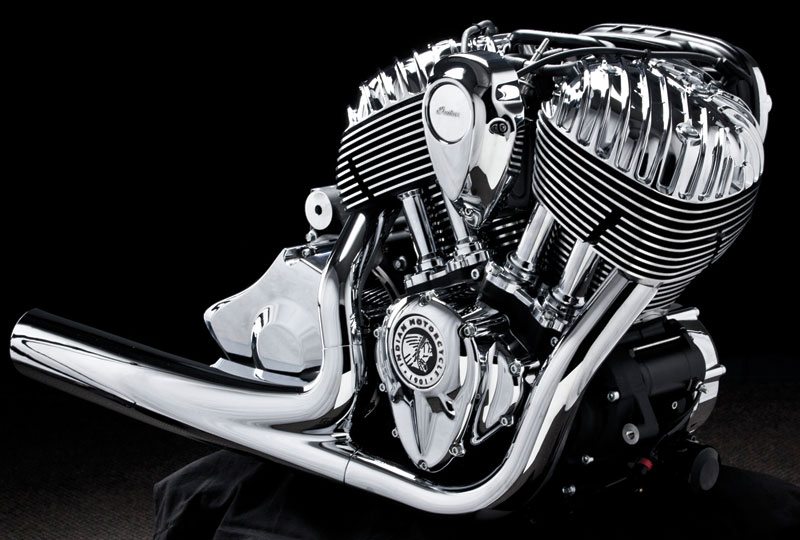
Beyond the well-executed retro styling, the Chiefs’ pride-and-joy is the Thunder Stroke 111 49-degree V-twin, the first all-new Indian engine in seven decades. With more displacement than anything available from Harley or Victory, Indian claims 119 lb-ft of torque at the crank, and you can feel that grunt with every twist of the throttle. With a forged, single-pin crank, the engine chugs along easily at low rpm, pulling cleanly from 1,000 rpm up to the 5,500 rpm redline. Inspired by the Power Plus V-twin in the 1940s-era Chief, the Thunder Stroke 111 has a flathead look, generous finning, parallel pushrod tubes and downward-firing exhausts. But it’s a thoroughly modern engine, with electronic sequential port fuel injection, throttle-by-wire and maintenance-free hydraulic lifters. Every effort was made to reduce mechanical noise so that the deep, rich exhaust note would be the most prominent sound. The engine runs smoothly and quietly without excessive vibration, but it throws off a lot of heat, especially on the right side where the exhaust headers are located. An oversize clutch was used to reduce effort at the lever, but a firm pull is required. The transmission shifts smoothly, final drive is via carbon fiber-reinforced belt, and the 5.5-gallon fuel tank requires premium fuel.
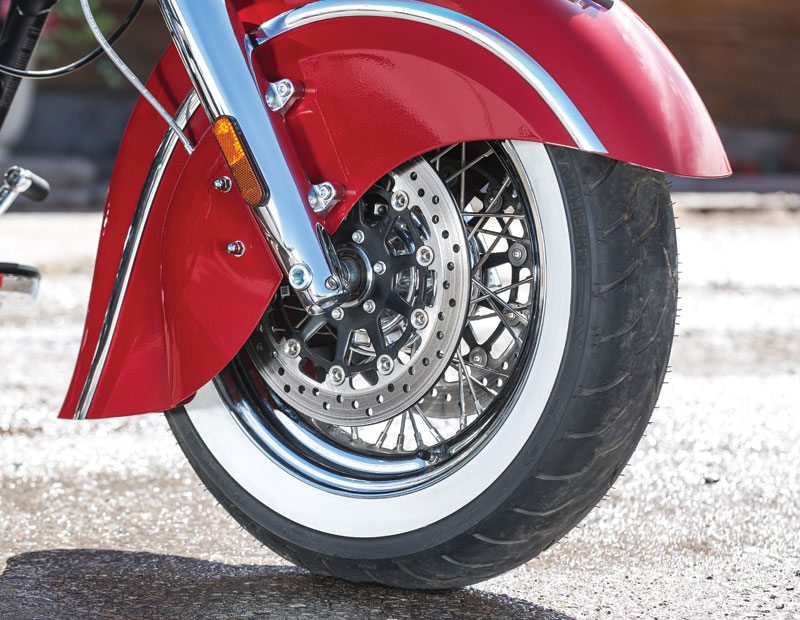
When it comes to performance and handling, the new Indian feels more like a Victory than a Harley, which comes as no surprise since many of the designers and engineers drew upon 15 years of experience with Polaris’ other motorcycle brand. Shared DNA is a good thing since the result is a torquey engine, a well-sorted transmission, a strong chassis, good suspension and brakes, and plenty of cornering clearance. The 6-piece, modular aluminum backbone frame is rigid, weighs only 58 pounds and has an integrated air intake beneath the steering head. All three models use the same 46mm non-adjustable cartridge fork with dual-rate springs and 4.7 inches of travel as well as coilover monotube rear shocks with progressive linkage, but the Classic and Vintage have 3.7 inches of rear travel with mechanical preload adjustment, whereas the Chieftain has 4.5 inches of rear travel with pneumatic preload adjustment. Suspension damping is good on all three bikes, but the extra rear travel on the Chieftain provides a more plush ride. A single brake setup is used for all three bikes, with dual 4-piston front calipers, a 2-piston rear caliper, floating rotors and standard ABS. These are heavy motorcycles with curb weights between 812 and 848 pounds, and the brakes have the power necessary to get them slowed down quickly and confidently.

Given that the new Chiefs were designed, engineered, tested and manufactured in just 27 months, it’s remarkable how good they are. These are not clunky, all-show-and-no-go bikes, they’re well-built machines that are ready to compete head-to-head with other cruisers. And they’re priced right—$18,999 for the Chief Classic, $20,999 for the Chief Vintage and $22,999 for the Chieftain in Thunder Black. For Indian Motorcycle Red or Springfield Blue, add $400 for the Classic/Vintage and $500 for the Chieftain. Indian is back, better than ever. And we’ll have a full test of a Chieftain soon.
2014 Indian Chief Classic/Chief Vintage/Chieftain Specs
Base Price: $18,999/$20,999/$22,999
Website: indianmotorcycle.com
Engine Type: Air-cooled, transverse 49-degree V-twin, OHV, 2 valves per cyl.
Displacement: 1,811cc (111ci)
Bore x Stroke: 101 x 113mm
Transmission: 6-speed, cable-actuated wet clutch
Final Drive: Belt
Wheelbase: 68.1 in./68.1 in./65.7 in.
Rake/Trail: 29 degrees/6.1 in. (Classic/Vintage), 25 degrees/5.9 in. (Chieftain)
Seat Height: 26.0 in.
Claimed Wet Weight: 812 lbs./835 lbs./848 lbs.
Fuel Capacity: 5.5 gals.
Average mpg: NA (91 PON min.)
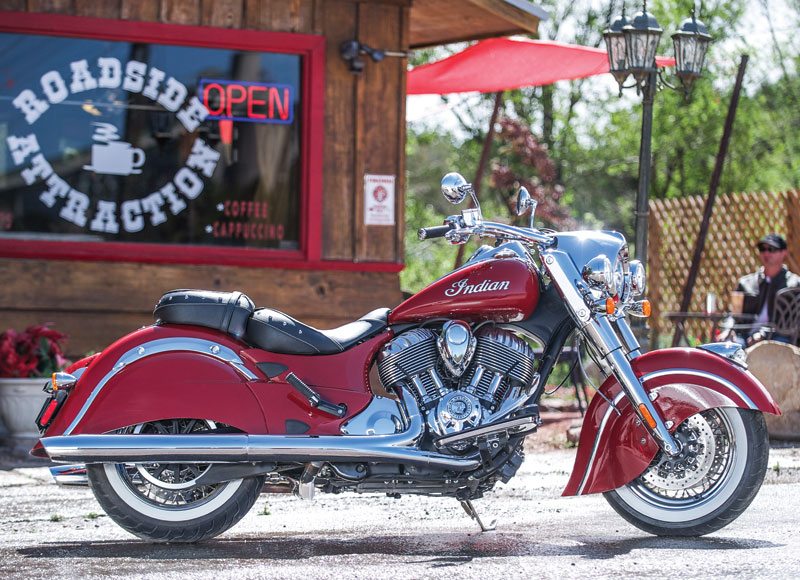
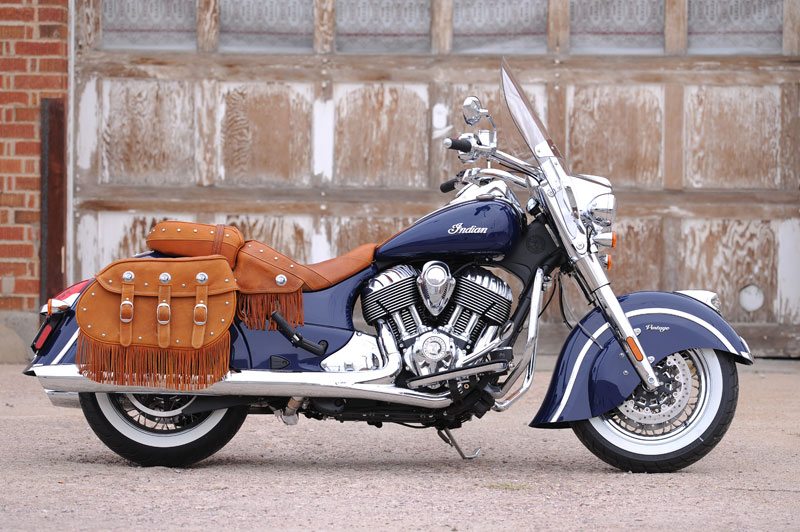
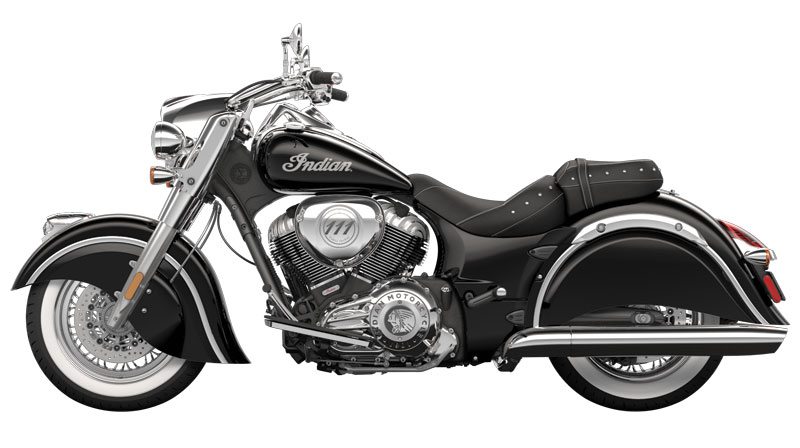
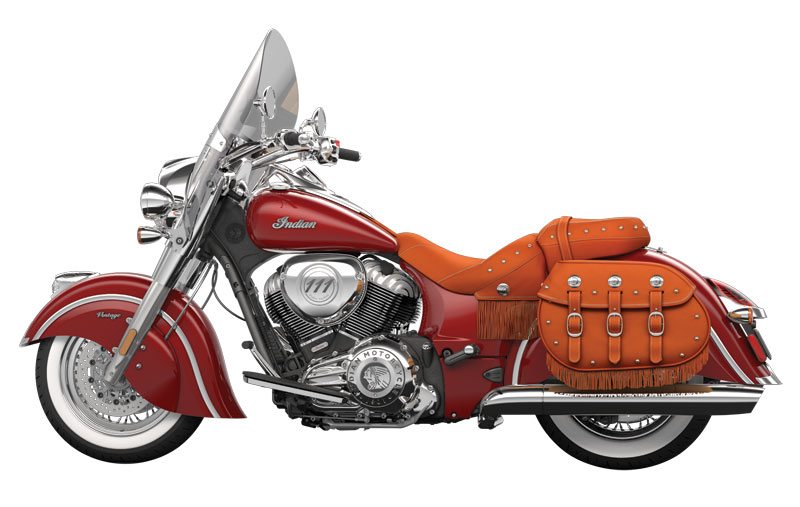
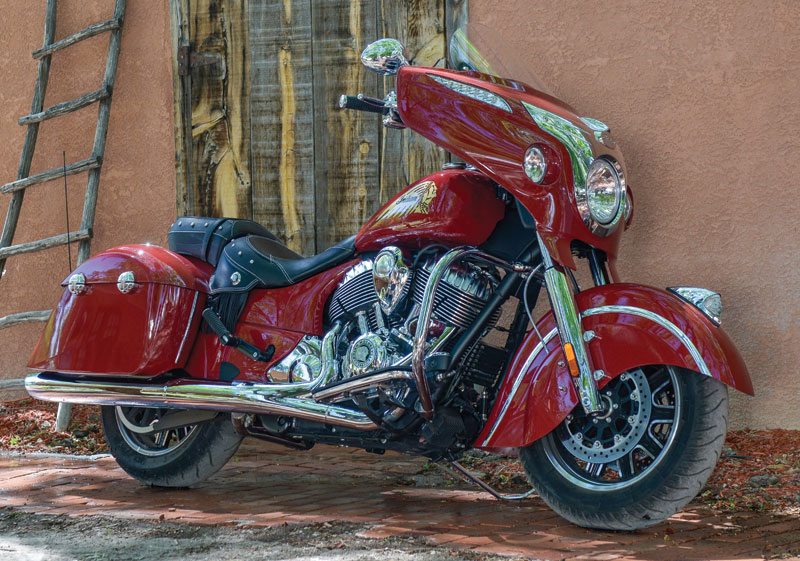
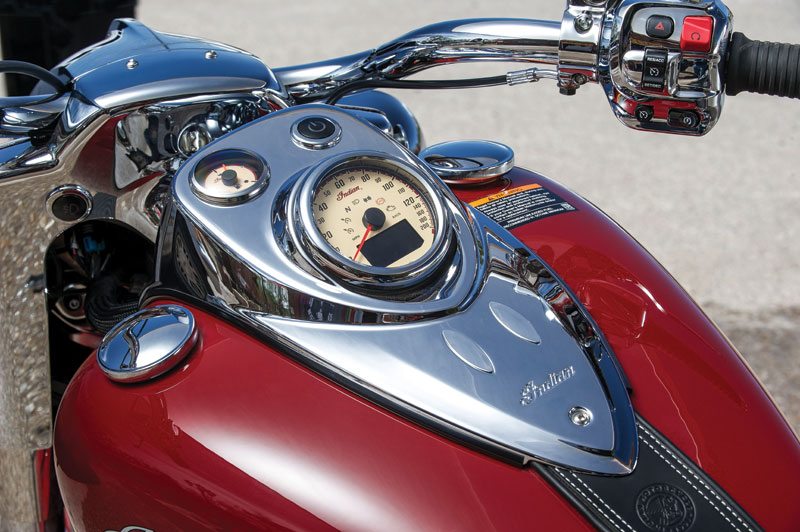
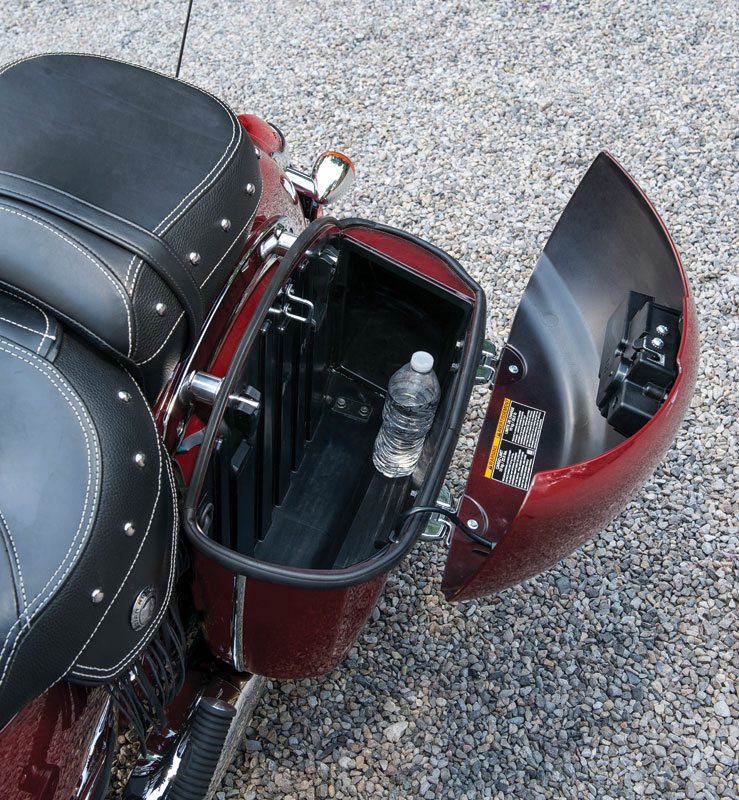








Look good and that engine is a work of art
Vibrations is way more than moderate. It starts in your feet and goes all the way through the handlebars on the Vintage. Vibration reminded me of the 1970’s Ironhead Sportsters.
Guess it’s better to wait for Gen-2 (as is usually the case). How can it really cost $500 for a red or blue paint job?
All the first tests I have read didn’t say anything about moderate vibrations. I test rode one and didn’t come away with that impression at all. The motor doesn’t rattle around in the frame and look like it’s going to fall out. You can actually use the mirrors. A 70’s iron head? you must be kidding
Gee Mr Gabbert, you obviously where not ridding one of the Chief’s, I road both the Vintage an the Chieftain several times, you Sir, must of been on one those Milwaukee Vibarator’s, Hardley-Davidson.
took demo ride loved everything bout it but the heat from back cylinder roasted my u know whats. Why cant american motorcycles use watercooled motors the hell with the puriest its about riding in comfort i have two metric bikes both watercooled and could drive them all day with no heat promblems.
I had an original 1947 Indian Chief with a 1943 engine. It had a tank shift and a left-foot clutch. Good touring bike, but only 4.5 inches of ground clearance.
You must not know anything about automotive paint Stephen Gabbert – try to buy some just once and you’ll understand the $500 cost. Also, have sat on one while it was running and the antenna didn’t so much as move -pictures really doesn’t do this bike justice – I’ve been Jonesing for once since the 1st article came out—will own one just as soon as I pay off my car, no doubt!